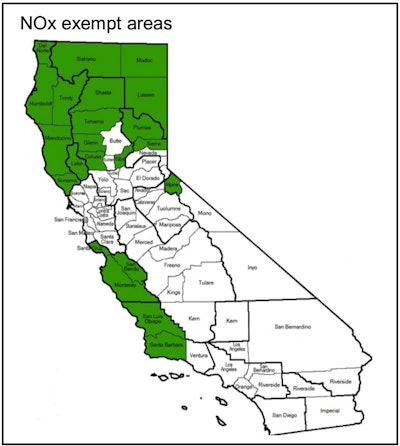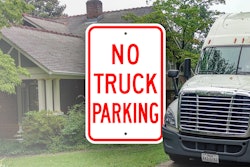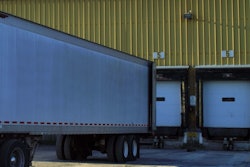
When the ball dropped on New Year's and revelers around the country rang in 2023, at that exact moment some 230,000 or more trucks across the country became legally banned from operating in California at a time of historic supply chain backups.
That's due to the California Air Resources Board's Truck and Bus Regulation phasing out every pre-2010 engine year-equipped truck in the country. Previously, analysis from Overdrive sister company RigDig Business Intelligence found 75,951 unique VINs for 2007-2009 model year trucks with some level of activity in California over the last five years, including registrations and inspections.
But according to CARB's annual enforcement report, the remaining number of vehicles facing a January 1, 2023, compliance deadline (2007 through 2009 model year engines) is estimated to be about 36,900 California registered trucks and up to 192,400 trucks registered in other states.
CARB's ban, of course, impacts trucks no matter what state they're registered in. "Non-compliant trucks issued an on-road or field citation are subject to a penalty of $1,000, which could go up to $1,800 if the owner fails to correct. To clear the citation, the owner needs demonstrate compliance by upgrading the engine, selling or scrapping the vehicle, or not operating in California, along with payment of the penalty," CARB wrote Overdrive.

CARB said those penalties can rise to $42,450 per violation, depending on eight factors:
- The extent of harm to the public caused by the violation.
- The nature and persistence of the violation, including the magnitude of the excess emissions.
- The compliance history of the defendant, including the frequency of past violations.
- The preventive efforts taken by the defendant, including the record of maintenance and any program to ensure compliance.
- The innovative nature and the magnitude of the effort required to comply, and the accuracy, reproducibility, and repeatability of the available test methods.
- The efforts of the defendant to attain, or provide for, compliance.
- The cooperation of the defendant during the course of the investigation and any action taken by the defendant, including the nature, extent, and time of response of any action taken to mitigate the violation.
- The financial burden to the defendant.
"Within six months, California is going to be crying out for trucks," said Jeremy Wallin, an owner-operator who hauls flatbed in a team with his wife, Tiffany. The Wallins, who used to frequent California, said it's "kind of sad" their 2017 Freightliner Coronado, powered by a 1998 Detroit Series 60, won't be able to run the Golden State anymore, but they're not worried.
"It’s a huge country," Wallin said. "If we can’t find enough work without having to go into California, something's wrong. There’s just plenty of work."
But, despite California's hardline stance, within the fine print of CARB's reg is a little bit of wiggle room.
"Non-compliant vehicles will be denied registration renewal or transfer with DMV and if operated in California are subject to citation and penalty by CARB’s Enforcement Division," CARB said. "CARB’s Enforcement Division can also conduct fleet audit and roadside vehicle inspections, and is working with the EPA to enforce the rule to vehicles based outside of California."
But there are exemptions to the rule. First, there is the "low-use vehicle exemption," which basically allows pre-2010 engines to run in the state if they don't run more than 1,000 miles annually there. Owners have to report mileage using the TRUCRS system. With the Port of Los Angeles about 240 miles from the Arizona border, a driver could potentially still wedge in two round trips to the shipping hub with an pre-2010 engine.
 Current NOx Exempt Areas are charted here.
Current NOx Exempt Areas are charted here.
Secondly, there's the NOx-exempt areas extension, which allows vehicles that operate exclusively in areas thus defined and have a PM filter installed to avoid replacing the engine. These areas include the following counties: Alpine, Colusa, Del Norte, Glenn, Humboldt, Lake, Lassen, Mendocino, Modoc, Monterey, Northern Sonoma, Plumas, San Benito, San Luis Obispo, Santa Barbara, Santa Cruz, Shasta, Sierra, Siskiyou, Tehama, Trinity, and Yuba.
Of course, as with any regulation in any area of government policy, there will be uneven enforcement, and older trucks aren't magically stopped at California's border. But careful operators can still plan ways to do business in the country's biggest economic and agricultural powerhouse if they're careful.









